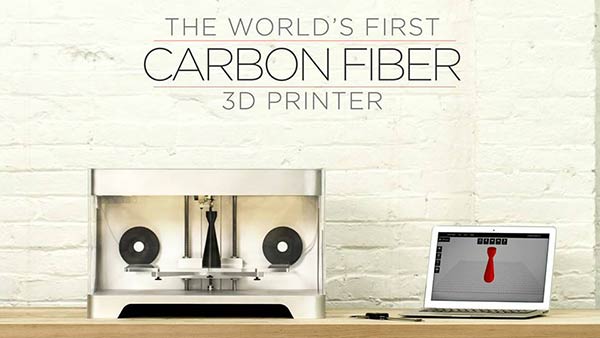Named after creator Gregory Mark, who also co-owns Aeromotions, The Mark One carbon fibre 3D printer was unveiled last month at the SolidWorks World convention in San Diego. This first of its kind printer is now available to pre-order, priced at $4,999.
"We took the idea of 3D printing, that process of laying things down strand by strand, and we used it as a manufacturing process to make composite parts," Mark told Popular Mechanics. "We say it's like regular 3D printers do the form - we do form and function."

Besides its carbon fibre printing capabilities, the machine is also able to print with fibreglass, nylon and PLA materials and employs kinematic coupling for consistent bed levelling - basically a self-levelling printing bed which clicks into position before each print.
"When you don't need the world's strongest material, the Mark One 3D prints a range of other materials to help professionals design and iterate quickly. Make super tough parts with our Nylon Filament. Or load our tried and true, low-cost PLA filament for those quick form and fit prints. And if you need the best cost-to-strength solution, crank out a print using our exclusive Fibreglass Filament that uses the same patented Continuous Filament Fabrication," suggests the MarkForged website describing this multi-material printer.
The Mark One printer is compact, measuring 22.6 inches (57.5 cm) wide, 14.2 inches (36.0 cm) tall and 12.7 inches (32.3 cm) deep. According to the company, the Mark One can print parts 20 times stiffer and five times stronger than ABS, a material known for its toughness and impact resistance, and it even has a higher strength-to-weight ratio than CNC-machined aluminium.

For $8,799 consumers can also get the Mark One Developer Kit which puts their pre-orders at the front of the line and includes extras such as a more Kevlar and two extra beds. Shipping of the printers will begin in the second half of 2014.













